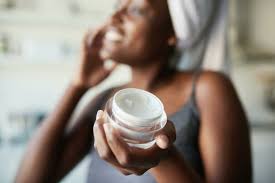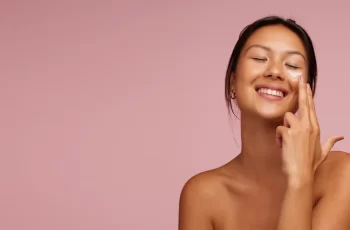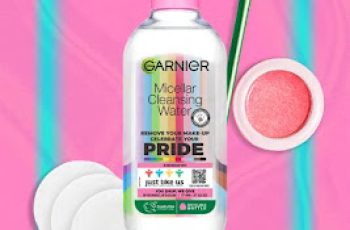Hydroquinone in Skin Care Products
Hydroquinone is a tyrosinase inhibitor used to inhibit melanin production and produce skin lightening and whitening.
Hydroquinone is found in skin care products for hyperpigmentation.
Hydroquinone creams and other hydroquinone products require a prescription.
Is hydroquinone safe? In this blog, I’ll review hydroquinone and give you my perspective as a dermatologist.
Hydroquinone
What Is Hydroquinone Used For?
Hydroquinone is the strongest skin whitening ingredient sold in the United States. It is used to treat melasma, dark spots on the skin, hyperpigmentation, post inflammatory hyperpigmentation and any other dyschromias that are caused by an excess of melanin.
Is Hydroquinone Safe? What are the Dangers of Hydroquinone?
Hydroquinone was banned in Europe in 2000. In Asia, its use is highly regulated. Hydroquinone (HQ) was used in over the counter skin care and cosmetic products at a concentration of 2% or less without a prescription until the U.S. CARES Act was passed in 2020. Subtitle F of this act changed the way hydroquinone was regulated and hydroquinone is now considered a drug and requires a prescription.
Hydroquinone has been used for many years by dermatologists to treat pigmentation disorders, with few reports of serious side effects. The reason people worry about the danger of hydroquinone is because it is a metabolite of cancer-causing benzene. However, this does not mean that hydroquinone causes cancer.
Some studies have shown that large doses of hydroquinone taken by mouth (not topical use) resulted in some evidence of cancer in rats. However, Hydroquinone is detoxified in the liver in humans, and metabolized very differently than in rats.5,6 In humans, HQ is probably metabolized to detoxified derivatives, such as glucuronide and sulfate conjugates of HQ.7
In the 40 years HQ has been on the market for the treatment of skin hyperpigmentation and no human cases of cancer have been attributed to its use.
Ochronosis
The main danger of hydroquinone is a condition called exogenous ochronosis.8 Ochronosis is blue-black spots on the skin that occur in the area of HQ application. This occurs after prolonged use of HQ and is more common in Asians and darker skin types.9 For this reason, the FDA decided that HQ should be used under a doctor’s supervision.
Topical HQ products are thought to cause exogenous ochronosis by inhibiting the enzyme homogentisic acid oxidase in the skin. This results in the local accumulation of homogentisic acid that then polymerizes to form ochronotic pigment.10 Despite the widespread use of HQ, only 30 cases of ochronosis have been attributed to its use in North America.6
Side Effects From Hydroquinone
It is not uncommon for hydroquinone to case an allergic skin rash. Nail discoloration may also occur.
The incidence of side effects from HQ may also be decreased through the use of lower strengths of HQ, using a test site first to determine the presence of allergy, and taking “hydroquinone holidays” every 3-4 months.
Read more about skin care routines to treat hyperpigmentation and hydroquinone holidays.
Where To Buy Hydroquinone?
You have to buy these from a pharmacy or your doctor.
Prescription drugs may contain hydroquinone (4%), and custom pharmacy formulations include hydroquinone (2% to ≥10%) as an ingredient.
What products contain hydroquinone?
The best hydroquinone creams are listed below. They require a prescription. Hydroquinone is only available by prescription – there are no OTC hydroquinone creams.
In some cases your doctor will have a compounding pharmacy make a custom hydroquinone cream for you. Hydroquinone can be generic or is available in these prescription brands:
Alphaquin
Claripel
Clarite
Eldopaque,
Eldoquin
Epiquin Micro
Esoterica
Lustra
Lustra-AF
Lustra-Ultra
Melanex
Melpaque,
Melquin HP 4%,
Melquin,
Melquin-3 Topical Solution
Nuquin HP Cream
Nuquin HP Gel
Solaquin
Tri-Luma
Find a doctor near you to prescribe hydroquinone or a skin lighting routine.
How Does Hydroquinone Work to Lighten Skin?
Hydroquinone is a type of skin lightener found in skin care products known as a tyrosinase inhibitor.
Hydroquinone lightens skin several ways:
Inhibits tyrosinase by decreasing its activity by 90%.3
Cytotoxic to melanocytes.2
Causes reversible inhibition of cellular metabolism by affecting both DNA and RNA synthesis.
How Is Hydroquinone Used To Lighten Dark Spots On The Skin?
Hydroquinone may be used alone, however it is often combined with skin lightening ingredients such as tretinoin, glycolic acid, kojic acid, azelaic acid, and corticosteroids.4
How Long Does it Take Hydroquinone to Work?
As with all tyrosinase inhibitors, it often takes 6 – 12 weeks before any improvement becomes noticeable.
Is Hydroquinone a natural ingredient? Where Does Hydroquinone come from?
HQ occurs naturally as an ingredient in various plant-derived food and beverage products, such as vegetables, fruits, grains, coffee, tea, beer, and wine.1
But there are no natural hydroquinone creams. You can find a list of skin lightening ingredients at this link. Some are natural, but hydroquinone is not considered a natural or clean ingredient.
16 Bauman Skin Types
To find the best skin care products for your skin type, you first need to know what your Baumann Skin Type is.
You can take the quiz and find out now!
DQH Can I use salicylic acid first and then vitamin C?
It’s easy to create a skincare routine, but knowing how to use it is another thing entirely. In most cases, if you’re not getting the desired skin results, it could be due to the layering of conflicting ingredients. So, is it possible that salicylic acid and vitamin C are such ingredients? Or are these active ingredients the duo that’s been missing from your skincare routine? If you want answers, stick around because today we are going to explain the benefits of salicylic acid and vitamin C and how they can be used in your daily life.
What are the benefits of salicylic acid for skin?
Salicylic acid is one of the most commonly used beta hydroxy acids and is favored by many people with oily, acne-prone skin. This acid is derived from willow bark, and unlike its water-soluble relatives (called alpha-hydroxy acids), salicylic acid is oil-soluble, which means it can penetrate deeper into the lower layers of the skin. Once it reaches the lower layers, it can help unclog pores of excess sebum, dirt, bacteria, debris, and impurities. This results in clearer skin tones and greater definition.
Not only does salicylic acid benefit the underlying layers, but the outer surface of the skin benefits as well. When applied to the skin, salicylic acid removes the buildup of dead skin cells. This is accomplished by breaking the bonds that hold dead cells to the surface. Over time, this can cause the complexion to look dull and prone to acne, blackheads, and other blemishes.
If you’d like to learn more about salicylic acid and how it can improve your skin, check out this dedicated blog post from a beauty insider.
What are the benefits of vitamin C for skin?
Vitamin C is considered one of the most powerful antioxidants, which means it is very effective at fighting free radicals and preventing them from causing further skin damage. Examples of free radicals include pollution, central heating, UV rays and harsh climate. They attack proteins, fats and cell membranes as soon as they come into contact with the skin, causing signs of premature aging such as fine lines and wrinkles as well as hyperpigmentation, flaky patches of skin and loss of elasticity.
Many people usually prefer to use vitamin C in their morning routine as this ingredient gives the complexion a radiant glow. You’ll also find that vitamin C can target areas of hyperpigmentation, plumping the skin and reducing the appearance of fine lines and wrinkles.
The thing about vitamin C is that there are a lot of outdated studies going back to the 1950s that describe vitamin C as an unstable skin component. Thanks to improvements in modern technology, this is no longer the case as all products now contain a stable form of vitamin C.
Visit The Beauty Insider to learn more about vitamin C. So please check out our blog post.
Can I use salicylic acid first and then vitamin C?
Yes, you absolutely can. In fact, it’s thought that using salicylic acid before using vitamin C ensures it penetrates faster and works faster.
This is an efficient way to utilize two power sources, and the reason has to do with pH. For example, the skin’s natural pH is about 4.7, making it slightly acidic. Salicylic acid and vitamin C are also both acidic, and you’ll find that vitamin C is absorbed quickly into the skin. Therefore, using salicylic acid beforehand can increase the acidity of the skin and allow vitamin C to penetrate into the skin faster.
While this is considered an effective way to combine two powerful ingredients, you need to be aware of your skin type and how it reacts to certain active ingredients. Even people with perfect, normal skin can experience skin sensitivity and irritation. Therefore, always consult a doctor or dermatologist before using any new products on your skin.
It’s also important to follow skin application rules. In this case, you need to use the product correctly to ensure you get the best results for your skin. If you’re not sure what I mean, the basic rule for skin is to start with the thinnest consistency and work your way up to the thickest consistency. This prevents a barrier from forming on the surface, preventing other active ingredients from penetrating the skin.
Can I use salicylic acid at night and vitamin C in the morning?
Yes, absolutely, this is considered the most effective way to get returns without any adverse side effects. This is because there is enough time between applications to ensure that the skin’s pH levels return to balance.
You’ll also find that Vitamin C is rich in antioxidants and is perfect for use in the morning to ensure your skin is protected and looking its healthiest. Due to the small size of salicylic acid molecules, it is an acid that is able to reach the deepest parts of the skin. While this is effective at keeping skin clear, it also increases the risk of irritation and photosensitivity. Therefore, many people prefer to use powerful BHAs in their evening routine without exposure to UV rays, pollution, or harsh weather.
Warning: If you avoid using sunscreen every day, none of these ingredients will do what your skin needs. The combination of chemical peels and powerful ingredients increases the risk of further damage to the skin’s surface. Use SPF 50 every day to keep your skin protected and your lipid barrier healthy, even on cloudy days, keeping your skin in top condition.



